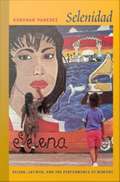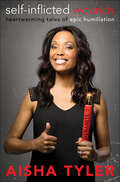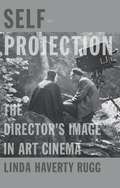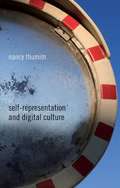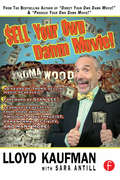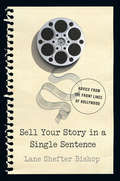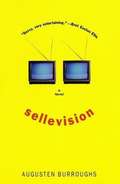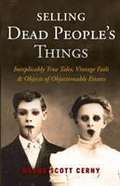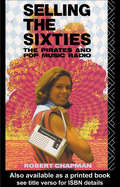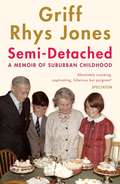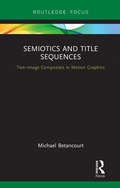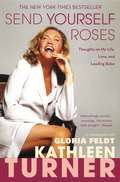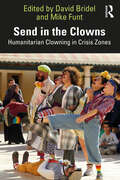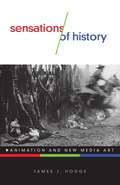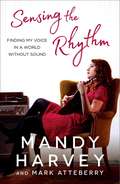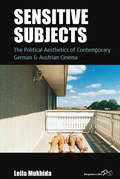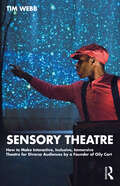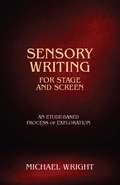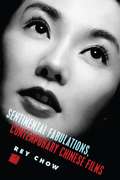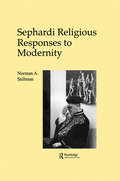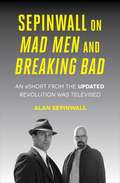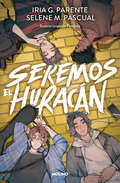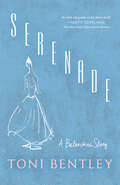- Table View
- List View
Selenidad: Selena, Latinos, and the Performance of Memory
by Deborah ParedezAn outpouring of memorial tributes and public expressions of grief followed the death of the Tejana recording artist Selena Quintanilla Prez in 1995. The Latina superstar was remembered and mourned in documentaries, magazines, websites, monuments, biographies, murals, look-alike contests, musicals, drag shows, and more. Deborah Paredez explores the significance and broader meanings of this posthumous celebration of Selena, which she labels "Selenidad. " She considers the performer's career and emergence as an icon within the political and cultural transformations in the United States during the 1990s, a decade that witnessed a "Latin explosion" in culture and commerce alongside a resurgence of anti-immigrant discourse and policy. Paredez argues that Selena's death galvanized Latina/o efforts to publicly mourn collective tragedies (such as the murders of young women along the U. S. -Mexico border) and to envision a brighter future. At the same time, reactions to the star's death catalyzed political jockeying for the Latino vote and corporate attempts to corner the Latino market. Foregrounding the role of performance in the politics of remembering, Paredez unravels the cultural, political, and economic dynamics at work in specific commemorations of Selena. She analyzes Selena's final concert, the controversy surrounding the memorial erected in the star's hometown of Corpus Christi, and the political climate that served as the backdrop to the touring musicals Selena Forever and Selena: A Musical Celebration of Life. Paredez considers what "becoming" Selena meant to the young Latinas who auditioned for the biopic Selena, released in 1997, and she surveys a range of Latina/o queer engagements with Selena, including Latina lesbian readings of the star's death scene and queer Selena drag. Selenidad is a provocative exploration of how commemorations of Selena reflected and changed Latinidad.
Self-Inflicted Wounds: Heartwarming Tales of Epic Humiliation
by Aisha TylerEmmy Award–winner Aisha Tyler shares her Self-Inflicted Wounds of epic mistakes through hilarious stories—and the life lessons she gained along the way.Refreshingly and sometimes brutally honest, surprising, and laugh-out-loud funny, the essays in this collection from comedian and actress Aisha Tyler vividly translate the brand of humor she has cultivated through her successful standup career, as well as the strong voice and unique point of view she expresses as a talk show and podcast host. Freely admitting moments of crushing personal embarrassment, Aisha celebrates the personal insights and authentic wisdom she earned from her experiences. Riotous, revealing, and wonderfully relatable, Self-Inflicted Wounds: Heartwarming Tales of Epic Humiliation is about the power of calamity to shape life, learning, and success.
Self-Projection: The Director’s Image in Art Cinema
by Linda Haverty RuggIn 1957, a decade before Roland Barthes announced the death of the author, François Truffaut called for a new era in which films would &“resemble the person who made&” them and be &“even more personal&” than an autobiographical novel. More than five decades on, it seems that Barthes has won the argument when it comes to most film critics. The cinematic author, we are told, has been dead for a long time. Yet Linda Haverty Rugg contends not only that the art cinema auteur never died, but that the films of some of the most important auteurs are intensely, if complexly, related to the lives and self-images of their directors. Self-Projection explores how nondocumentary narrative art films create alternative forms of collaborative self-representation and selfhood.The book examines the work of celebrated directors who plant autobiographical traces in their films, including Truffaut, Bergman, Fellini, Tarkovsky, Herzog, Allen, Almodóvar, and von Trier. It is not simply that these directors, and many others like them, make autobiographical references or occasionally appear in their films, but that they tie their films to their life stories and communicate that link to their audiences. Projecting a new kind of selfhood, these directors encourage identifications between themselves and their work even as they disavow such connections. And because of the collaborative and technological nature of filmmaking, the director&’s self-projection involves actors, audience, and the machines and institution of the cinema as well.Lively and accessible, Self-Projection sheds new light on the films of these iconic directors and on art cinema in general, ultimately showing how film can transform not only the autobiographical act but what it means to have a self.
Self-Representation and Digital Culture
by Nancy ThumimTaking a close look at ordinary people 'telling their own story', Thumim explores self-representations in contemporary digital culture in settings as diverse as reality TV, online storytelling, and oral histories displayed in museums. Now available in paperback, Self-Representation and Digital Culture addresses the institutional contexts of production, technology and form of the texts, and the point of view of those who represent themselves. This highly original research examines how contradictory and widely different politics inform and shape examples of 'speaking for oneself'. In the book, Thumim argues that analysis and theorization of the activity of self-representation is vital for media, communication and cultural studies at a time when examples, of what should now be understood as a genre, both surround us and appear, at first glance, to all be alike.
Sell Your Own Damn Movie!
by Lloyd KaufmanThis is the 3rd volume in Mr. Kaufman's hilarious, how-to series for hard-working self-starters and hard-laughing, cheeky filmmakers. "Sell Your Own Damn Movie!" covers everything you need to do to get your finished film seen by festival-goers, movie-goers, DVD-buyers and web-goers around the world. You will be lead through a primer on the history of film distribution to a discussion of the many ways you can get your film out there, either through a reputable distributor or all on your own. From the realities of distribution, to utilizing the internet to self-distribution, Mr. Kaufman tells you in his habitually lucid and off-the-wall way. Inserts include interviews and pointers from veteran distribution pros as well as directors and producers who share their own front-line stories. Mr. Kaufman recounts his own raucous stories of marketing pleasures and nightmares from 35 years of movie-making experience, creating a uniquely useful and entertaining read. Or, in Lloyd's inimitable words. The most asked question at my worldwide popular, legendary, renowned master class is, "How do I get my no-budget, zombie giraffe flick distributed?†Well, have no fear, because the 3rd volume in Uncle Lloydie's how-to series of go-to guides for filmmakers reveals the secrets, methods and tricks (short of prostituting yourself and selling bodily organs) to getting your film distributed. With Troma, our legendary 35-year-old independent studio, Michael Herz and I have developed a low cost, high-impact method for low-budget film distribution, which has lead to a high-profile brand name and a catalog of over 800 titles! Now you can learn to get you movie out there, too. I will be your busty tour guide, sharing with you my hard-earned cinematic distribution know-how! -LEARN! How I achieved box office success with my fowl chicken zombie masterpiece Poultrygeist, and everyone's favorite super-human hero from New Jersey, the Toxic Avenger, for practically no money! -SMELL! The sewer that is mainstream distribution as I drag you through the muck, be-farting upon you the real scoop behind "indie†and mainstream distribution deals. -MASTICATE! (No, not that kind of masticating) On the knowledge of DVD distribution as I es-chew the fat and get to the skinny of Do-It-Yourself DVD distribution. I will teach you the fundamentals of having a good website (like www.Troma.com) to boost your sales! -FEAST! On my golden brown chicken puns as I cleverly cluck your brain out with the irrefutable knowledge of how I sold over 10,000 units of the 3-disc limited-edition Poultrygeist DVD in a matter of months! YES! If you have any doubt that I will not be able turn your no-budget zombie giraffe opus into box-office gold, then put down this book proposal! No wait, pick it back up, pick it back up! This is a recession damnit, Troma needs all the money we can, er... I need to educate you filmmakers looking for distribution gold (brown)! After reading my book, any damn filmmaker will be able to "Sell Your Own Damn Movie!†Featuring expert advice from those who have successfully sold their films: * David Cronenberg (Director of The Fly, Crash, A History of Violence)* Oren Peli (Director/Producer of Paranormal Activity)* Ted Hope (Producer of Crouching Tiger, Hidden Dragon, In the Bedroom, Happiness)* Brad Kembel (Executive Vice President of International Distribution at Summit Films; Twilight)* James Gunn (Writer/Director of Super, Dawn of the Dead, Slither)* Jonathan Wolf (Executive Vice President, Independent Film and Television Alliance and Managing Director, American Film Market)... and many more who have sold their own damn movies!
Sell Your Story in A Single Sentence: Advice from the Front Lines of Hollywood
by Lane Shefter BishopEvery writing project has one thing in common--they all start with a single sentence. Writers constantly struggle to answer this question: What is your story about? Finally, a guide by a leading Hollywood insider who actually knows the answer--and now she shows you how to do it yourself! Lane Shefter Bishop, CEO of Vast Entertainment, explains the key to selling your screenplay, novel, or script. This comprehensive guide to opening career doors is the first of its kind, highlighting the tips and techniques for making your story stand out. From tips on character development to hints on points to avoid, Bishop covers all your bases when selling your story.
Sellevision: A Novel
by Augusten BurroughsDarkly funny and gleefully mean-spirited, this novel by the author of "Running with Scissors" is an account of the greed and insanity of a fictional home shopping network.
Selling Dead People's Things: Inexplicably True Tales, Vintage Fails and Objects of Objectionable Estates
by Duane Scott CernyChicago antiques dealer Duane Scott Cerny gives a behind-the-curtain peek into the world of antiques and their obsessive owners--while still alive and after their passing. Whether processing the estate of a hoarding beekeeper, disassembling the retro remains of an infamous haunted hospital, or conducting an impromptu appraisal during a shiva gone disturbingly wrong, every day is a twisted treasure hunt for this twenty-first-century antiques dealer. While digging deep into the basements, attics, and souls of the most interesting collectors imaginable, traveling from one odd house call to the curious next, resale predicaments will confound your every turn. Be careful where you step, watch what you touch, and gird your heart--Antiques Roadshow, this ain't!
Selling the Sixties: The Pirates and Pop Music Radio
by Robert ChapmanWas it a non-stop psychedelic party or was there more to pirate radio in the sixties than hedonism and hip radicalism? From Kenny Everett's sacking to John Peel's legendary `Perfumed Garden' show, to the influence of the multi-national ad agencies, and the eventual assimilationof aspects of unofficial pop radio into Radio One, Selling the Sixties examines the boom of private broadcasting in Britain. Using two contrasting models of pop piracy, Radios Caroline and London, Robert Chapman sets pirate radio in its social and cultural context. In doing so he challenges the myths surrounding its maverick `Kings Road' image, separating populist consumerism from the economic and political machinations which were the flipside of the pirate phenomenon. Selling the Sixties includes previously unseen evidence from the pirates' archives, revealing interviews and an unrivalled selection of rare audio materials.
Semi-Detached
by Griff Rhys JonesSemi-detached Griff relives freezing bus journeys to school and the impulsive stealing of that half-a-crown from Charlie Hume’s money box; sitting outside Butlins at Clacton (longing to be inside and on the Waltzer instead of stranded on the pebbles with his dad); hazy summer afternoons spent with feral gangs in the woods, or storming the mud flats singing extracts from the Bonzo Dog Dooh Dah Band. The memories are like Mivvis, frozen and fuzzy at the edges, but a sweet jam of pure recollected goo at the centre.From birth to the BBC, this is a story of a confident middle child. Griff’s devoted parents Gwynneth and Elwyn gave him love, security and plenty of asparagus soup from a fake wicker vacuum flask with a plastic top. Griff’s father Elwyn, a retiring hospital doctor with a penchant for sweeties and ice-cream, loathed the tedium of English social ritual and hid behind his family and woodwork. From tree houses to boats, puppets to tables, he sawed and hammered his way into his family’s affections.Griff left the bosom of his loving, irascible, eccentric, solid, all engulfing family for the firm embrace of real life; via the Upminster Fun Gang, the Direct Grant System and Party Sevens, losing his virginity down the back of a bunk in a twenty nine foot yacht, discovering the romantic advantages of shared babysitting engagements and the drawbacks of infatuation with identical twins. If he hadn’t moved around so much as a child, would Griff have felt less like a voyeur, looking in on the lighted window across the square, the Georgian house glowing in the sun, the clink of glasses and the bray of public school certainties? Would he be able to tuck in his own shirt? Would he be fully detached? A laugh-aloud buffet of baby boomer Britain, Griff’s self-deprecating, elegant, affectionate prose reveals a little bit better how on earth you got from there to here.
Semiotics and Title Sequences: Text-Image Composites in Motion Graphics (Routledge Studies in Media Theory and Practice)
by Michael BetancourtTitle sequences are the most obvious place where photography and typography combine on-screen, yet they are also a commonly neglected part of film studies. Semiotics and Title Sequences presents the first theoretical model and historical consideration of how text and image combine to create meaning in title sequences for film and television, before extending its analysis to include subtitles, intertitles, and the narrative role for typography. Detailed close readings of classic films starting with The Cabinet of Dr. Caligari, and including To Kill A Mockingbird, Dr. Strangelove, and The Good, the Bad and the Ugly, along with designs from television programs such as Magnum P.I., Castle, and Vikings present a critical assessment of title sequences as both an independent art form and an introduction to the film that follows.
Send Yourself Roses: Thoughts on My Life, Love, and Leading Roles
by Gloria Feldt Kathleen TurnerFrom her film debut as the sultry schemer in Body Heat to her award-winning role as Martha in Who's Afraid of Virginia Woolf?, actress Kathleen Turner's unique blend of beauty, intelligence, and raw sexuality has driven her personal and professional life. Now, in this gutsy memoir, the screen icon tells us of the risks she's taken and the lessons she's learned-sometimes the hard way. For the first time, Turner shares her childhood challenges-a life lived in countries around the world until her father, a State Department official whom she so admired, died suddenly when she was a teenager. She talks about her twenty year marriage, and why she and her husband recently separated, her close relationship with her daughter, her commitment to service, and how activism in controversial causes has bolstered her beliefs. And Turner reveals the pain and heartbreak of her struggle with rheumatoid arthritis, and how, in spite of it, she made a daring decision: to take a break from the movies and relaunch her stage career. Along the way, Turner describes what it's like to work with legends like Jack Nicholson, Michael Douglas, William Hurt, Steve Martin, Francis Ford Coppola, John Huston, John Waters, Edward Albee...and, with characteristic irreverent humor, shares her behind-the-screen stories of dealing with all types of creative, intimidating, and inspiring characters. Kathleen Turner has always known that she would play the lead in the story of her life. It's impossible not to take her lessons on living, love, and leading roles to heart. And it won't be long until you'll be sending yourself roses!
Send in the Clowns: Humanitarian Clowning in Crisis Zones
by David Bridel Mike FuntSend in the Clowns presents interviews with twenty-four pioneering humanitarian and activist clowns and thought leaders working in hospitals, refugee camps, orphanages and war zones, and at the sites of street protests and locations of social unrest across the world.This book is built around interviews with some of the world’s leading practitioners of clowning for change, justice, and health outside of the entertainment mainstream, featuring artists and organizations including Patch Adams (US), the Dream Doctors Project (Israel), Clown Me In (Lebanon), and Doutores da Alegria (Brazil). Situating the topic in relation to indigenous and ritual clowning, investigating the various functions of the clown in early societies, and centering the discourse around interviews with key practitioners, the book explores a wide range of clown applications across the globe. This includes the special significance of the clown archetype in socially, politically, and culturally challenging situations, the successes and challenges of the art activists who are at the forefront of this movement, and the modern humanitarian clown’s relationship to original forms of clowning that can be traced back through history.This is a vital resource for anyone studying, teaching, or practicing clown work in applied contexts, from health care to conflict resolution.
Seneca's Oedipus
by Ted Hughes Lucius Annaeus SenecaSophocles' Oedipus Tyrannus is the most famous of ancient tragedies and a literary masterpiece. It is not, however, the only classical dramatization of Oedipus' quest to discover his identity. Between four and five hundred years after Sophocles' play was first performed, Seneca composed a fine, but neglected and often disparaged Latin tragedy on the same subject, which, in some ways, comes closer to our common understanding of the Oedipus myth. Now, modern readers can compare the two versions, in new translations by Frederick Ahl. Balancing poetry and clarity, yet staying scrupulously close to the original texts, Ahl's English versions are designed to be both read and performed, and are alert to the literary and historical complexities of each. In approaching Sophocles anew, Ahl is careful to preserve the richly allusive nature and rhetorical power of the Greek, including the intricate use of language that gives the original its brilliant force. For Ahl, Seneca's tragedy is vastly and intriguingly different from that of Sophocles, and a poetic masterpiece in its own right. Seneca takes us inside the mind of Oedipus in ways that Sophocles does not, making his inner conflicts a major part of the drama itself in his soliloquies and asides. Two Faces of Oedipus opens with a wide-ranging introduction that examines the conflicting traditions of Oedipus in Greek literature, the different theatrical worlds of Sophocles and Seneca, and how cultural and political differences between Athenian democracy and Roman imperial rule affect the nature and conditions under which the two tragedies were composed. This book brings two dramatic traditions into conversation while providing elegant, accurate, and exciting new versions of Sophocles' and Seneca's tragedies.
Sensations of History: Animation and New Media Art (Electronic Mediations #57)
by James J. HodgeA phenomenological investigation into new media artwork and its relationship to history What does it mean to live in an era of emerging digital technologies? Are computers really as antihistorical as they often seem? Drawing on phenomenology&’s investigation of time and history, Sensations of History uses encounters with new media art to inject more life into these questions, making profound contributions to our understanding of the digital age in the larger scope of history.Sensations of History combines close textual analysis of experimental new media artworks with in-depth discussions of key texts from the philosophical tradition of phenomenology. Through this inquiry, author James J. Hodge argues for the immense significance of new media art in examining just what historical experience means in a digital age. His beautiful, aphoristic style demystifies complex theories and ideas, making perplexing issues feel both graspable and intimate.Highlighting underappreciated, vibrant work in the fields of digital art and video, Sensations of History explores artists like Paul Chan, Phil Solomon, John F. Simon, and Barbara Lattanzi. Hodge&’s provocative interpretations, which bring these artists into dialogue with well-known works, are perfect for scholars of cinema, media studies, art history, and literary studies. Ultimately, Sensations of History presents the compelling case that we are not witnessing the end of history—we are instead seeing its rejuvenation in a surprising variety of new media art.
Sensing the Rhythm: Finding My Voice in a World Without Sound
by Mark Atteberry Mandy HarveyThe inspiring true story of Mandy Harvey—a young woman who became deaf at age nineteen while pursuing a degree in music—and how she overcame adversity and found the courage to live out her dreams.When Mandy Harvey began her freshman year at Colorado State University, she could see her future coming together right before her eyes. A gifted musician with perfect pitch, she planned to get a music degree and pursue a career doing what she loved. But less than two months into her first semester, she noticed she was having trouble hearing her professors. In a matter of months, Mandy was profoundly deaf. With her dreams so completely crushed, Mandy dropped out of college and suffered a year of severe depression. But one day, things changed. Mandy’s father asked her to join him in their once favorite pastime—recording music together—and the result was stunningly beautiful. Mandy soon learned to sense the vibrations of the music through her bare feet on a stage floor and to watch visual cues from her live accompaniment. The result was that she now sings on key, on beat, and in time, performing jazz, ballads, and sultry blues around the country. Full of inspiring wisdom and honest advice, Sensing the Rhythm is a deeply moving story about Mandy’s journey through profound loss, how she found hope and meaning in the face of adversity, and how she discovered a new sense of passion and joy.
Sensitive Subjects: The Political Aesthetics of Contemporary German and Austrian Cinema (Film Europa #23)
by Leila MukhidaBoth politically and aesthetically, the contemporary German and Austrian film landscape is a far cry from the early days of the medium, when critics like Siegfried Kracauer produced foundational works of film theory amid the tumult of the early twentieth century. Yet, as Leila Mukhida demonstrates in this innovative study, the writings of figures like Kracauer and Walter Benjamin in fact remain an undervalued tool for understanding political cinema today. Through illuminating explorations of Michael Haneke, Valeska Grisebach, Andreas Dresen, and other filmmakers of the post-reunification era, Mukhida develops an analysis centered on film aesthetics and experience, showing how medium-specific devices like lighting, sound, and mise-en-scène can help to cultivate political sensitivity in spectators.
Sensory Theatre: How to Make Interactive, Inclusive, Immersive Theatre for Diverse Audiences by a Founder of Oily Cart
by Tim WebbSensory Theatre: How to Make Interactive, Inclusive, Immersive Theatre for Diverse Audiences by a Founder of Oily Cart is an accessible step-by-step guide to creating theatre for inclusive audiences, such as young people on the autism spectrum or affected by other neuro-divergent conditions and children under two. Conventional theatre relies on seeing and hearing to involve its audience; sensory theatre harnesses the power of five or more senses to address its participants who have different ways of relating to the world around them. This book is an insightful history of Oily Cart and its pioneering development of work for the very young, including Baby Theatre, and for neuro-divergent audiences including those on the autism spectrum. It gives a clear introduction to the fundamental concepts of this theatre, suggests a host of practical techniques drawn from over forty years of experience, and describes some of Oily Cart’s most radical innovations, including theatre on trampolines, in hydrotherapy pools, and with flying audiences in the company of aerial artists. The book also includes copious photos from the Oily Cart’s archives and links to videos examples of the company’s work. Readers will learn how to: Research the intended audience while not being led astray by labels. Create a welcoming, immersive sensory space in classrooms, nurseries, school halls, and playgrounds. Devise sensory stories that can be adapted to suit different audiences. Recruit, audition, cast, and run rehearsals. Ensure that the production is truly sensory and interactive. Written for Theatre for Young Audiences, Drama in Education, and specialized Applied Theatre courses, as well as educators and theatre practitioners interested in creating inclusive, interactive productions, Sensory Theatre offers a goldmine of ideas for making work that connects with audiences who can be the hardest to reach.
Sensory Writing for Stage and Screen: An Etude-Based Process of Exploration
by Michael WrightThrough a series of systematic explorations across a wide range of scenarios, Sensory Writing for Stage and Screen offers script writers exercises for attending to their own sensory experiences as a means to exploring the sensory experiences—and worlds—of the characters they create.
Sentimental Fabulations, Contemporary Chinese Films: Attachment in the Age of Global Visibility (Film and Culture Series)
by Rey ChowWhat is the sentimental? How can we understand it by way of the visual and narrative modes of signification specific to cinema and through the manners of social interaction and collective imagining specific to a particular culture in transition? What can the sentimental tell us about the precarious foundations of human coexistence in this age of globalization? Rey Chow explores these questions through nine contemporary Chinese directors (Chen Kaige, Wong Kar-wai, Zhang Yimou, Ann Hui, Peter Chan, Wayne Wang, Ang Lee, Li Yang, and Tsai Ming-liang) whose accomplishments have become historic events in world cinema. Approaching their works from multiple perspectives, including the question of origins, nostalgia, the everyday, feminine "psychic interiority," commodification, biopolitics, migration, education, homosexuality, kinship, and incest, and concluding with an account of the Chinese films' epistemic affinity with the Hollywood blockbuster Brokeback Mountain, Chow proposes that the sentimental is a discursive constellation traversing affect, time, identity, and social mores, a constellation whose contours tends to morph under different historical circumstances and in different genres and media. In contemporary Chinese films, she argues, the sentimental consistently takes the form not of revolution but of compromise, not of radical departure but of moderation, endurance, and accommodation. By naming these films sentimental fabulations-screen artifacts of cultural becoming with irreducible aesthetic, conceptual, and speculative logics of their own-Chow presents Chinese cinema first and foremost as an invitation to the pleasures and challenges of critical thinking.
Sephardi Religious Responses/M
by StillmanFirst Published in 1995. Routledge is an imprint of Taylor & Francis, an informa company.
Sepinwall On Mad Men and Breaking Bad: An eShort from the Updated Revolution Was Televised
by Alan SepinwallFrom the updated edition of The Revolution Was Televised, Alan Sepinwall's analysis of Breaking Bad and Mad Men, featuring new commentary and insights on the complete series and controversial finales.
Ser yo, Tomi
by Tomás BenítezEl bailarín de freestyle Tomás Benítez les cuenta todos sus secretos a sus miles de seguidores. ¡Ey! ¡Hola! Bienvenid@ a mi libro. Quiero contarte mi historia, cómo fue que encontré lo que me apasiona. Sí, ya sabés. Bailar es lo que más me gusta en la vida. Cuando muevo mi cuerpo me siento libre. ¿Se nota? Quiero compartir con vos momentos muy fuertes que viví, experiencias que me marcaron (de las lindas y de las otras) y todo eso que me llevó a descubrir el freestyle. No creas que el camino es fácil. Y todavía tengo mucho por aprender. Pero si hay algo que tengo muy claro es que lo más importante es ser fiel a uno mismo. ¿Qué te dice tu corazón? ¿Quién sos? Yo soy Tomi.
Seremos el huracán
by Iria G. Parente Selene M. PascualDorothy Gale ha perdido su hogar o, al menos, eso siente ella. Quizá un inesperado grupo de música, junto a tres desconocidos, pueda darle un nuevo lugar al que pertenecer. Aunque el precio sea vivir una vida que no es la suya. Dorothy Gale está perdida o, al menos, se siente así desde que su hermano Theo murió y con él, el sueño de dedicarse juntos a la música. Justo ahora, cuando es demasiado tarde, Dottie recibe una llamada que debió ser para Theo: su gemelo ha sido elegido para formar parte de WIZARD, la próxima boyband de Emerald Music. Pero Theo ya no está. Y si Dottie ocupara su lugar y si se hiciera pasar por él, ¿no sería otra manera de mantener vivo su recuerdo un poco más? La idea parece buena hasta que conoce a sus compañeros de grupo, con los que tendrá que convivir a todas horas: Raven, el actor con fama de cabeza hueca y un instinto único para el show business; Leo, la estrella de TikTok que parece estar siempre a la espera de algo terrible, y Val, el chico sin corazón que no piensa en nada más que en llegar a lo más alto, cueste lo que cueste. Juntos planean arrasar el mundo de la música como un huracán, pero... ¿ES POSIBLE VIVIR UNA MENTIRA DELANTE DE MILLONES DE PERSONAS SIN OLVIDARTE DE QUIÉN ERES EN REALIDAD? Lo que se ha dicho de Seremos el huracán:«Una vez más, Iria y Selene demuestran que saben perfectamente qué teclas tocar para que sus lectores se ahoguen en un mar de emociones».Cherry Chic, autora de la bilogía Rose Lake. «Seremos el huracán es uno de esos libros que te hará sentir como en casa (y se está mejor en casa que en ningún sitio)».Raquel Brune, autora de Los guardianes de almas.
Serenade: A Balanchine Story
by Toni BentleyToni Bentley, a dancer for George Balanchine, the greatest ballet maker of the 20th century, tells the story of Serenade, his iconic masterpiece, and what it was like to dance—and live—in his world at New York City Ballet during its legendary era. "Reading Bentley's Serenade made me feel as alive as I felt on the stage the moment that I fell in love with ballet…. [A] delicate balance of personal memoir, rarefied elegance, history of the arts and pure human interest.&”—Misty Copeland, New York Times Book Review "[A] unique document about one of the greatest ballets ever created…. A beautiful read&”—Mikhail BaryshnikovAt age seventeen, Toni Bentley was chosen by Balanchine, then in his final years, to join the New York City Ballet. From both backstage and onstage, she carries us through the serendipitous history and physical intricacies and demands of Serenade: its dazzling opening, with seventeen women in a double-diamond pattern; its radical, even jazzy, use of the highly refined language that is ballet; its place in the choreographer&’s own dramatic story of his immigration to the United States from Soviet Russia; its mystical—and literal—embodiment of the tradition of classical ballet in just thirty-three minutes. Bentley takes us inside the rarefied, intense, and thrilling world Balanchine created through his lifelong devotion to celebrating and expanding female beauty and strength—a world that, inevitably, passed upon his death. An intimate elegy to grace and loss and to the imprint of a towering artist and his transcendent creation on Bentley&’s own life, Serenade: A Balanchine Story is a rich narrative by a dynamic artist about the nature of art itself at its most ephemeral and glorious.
